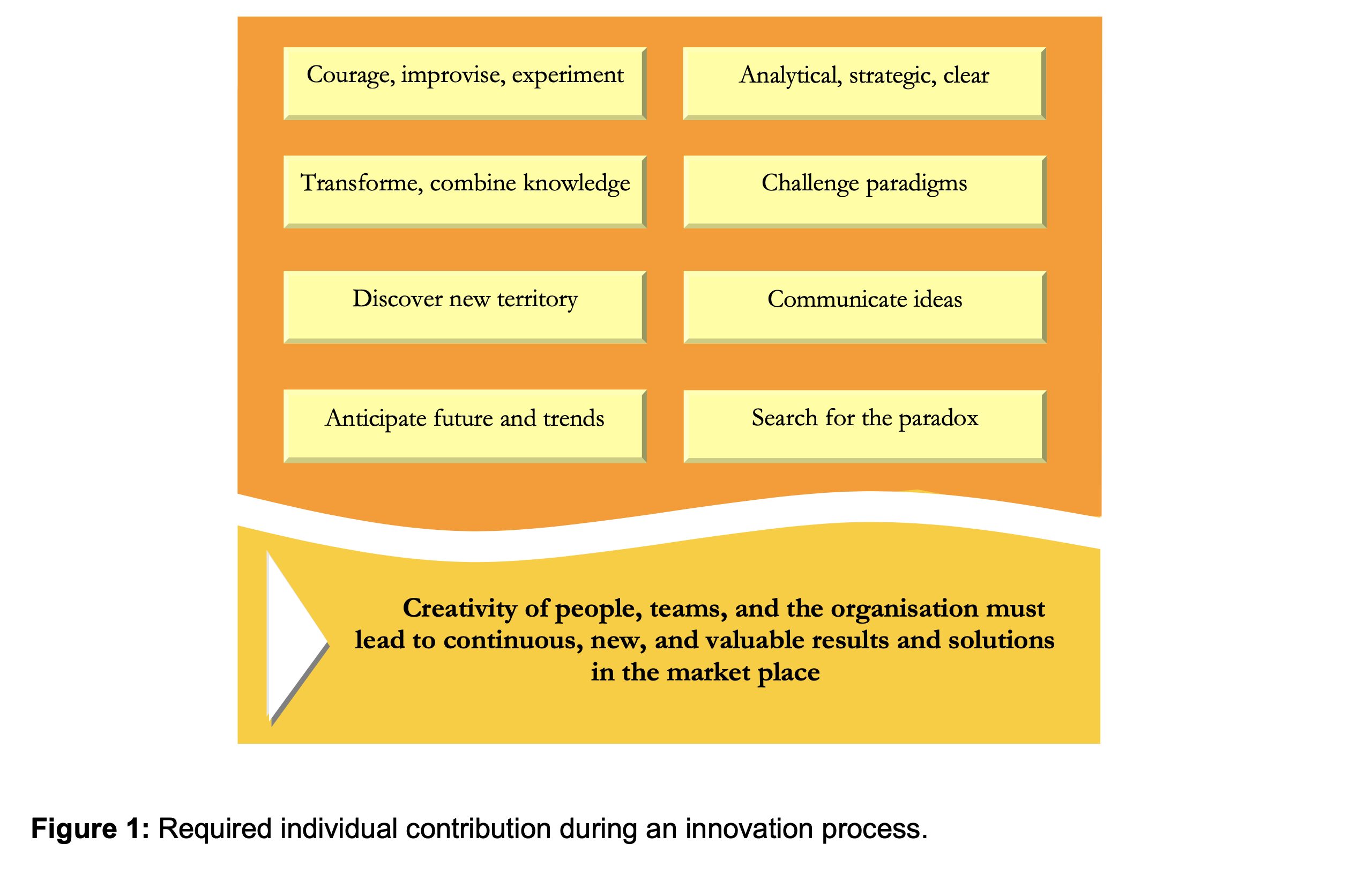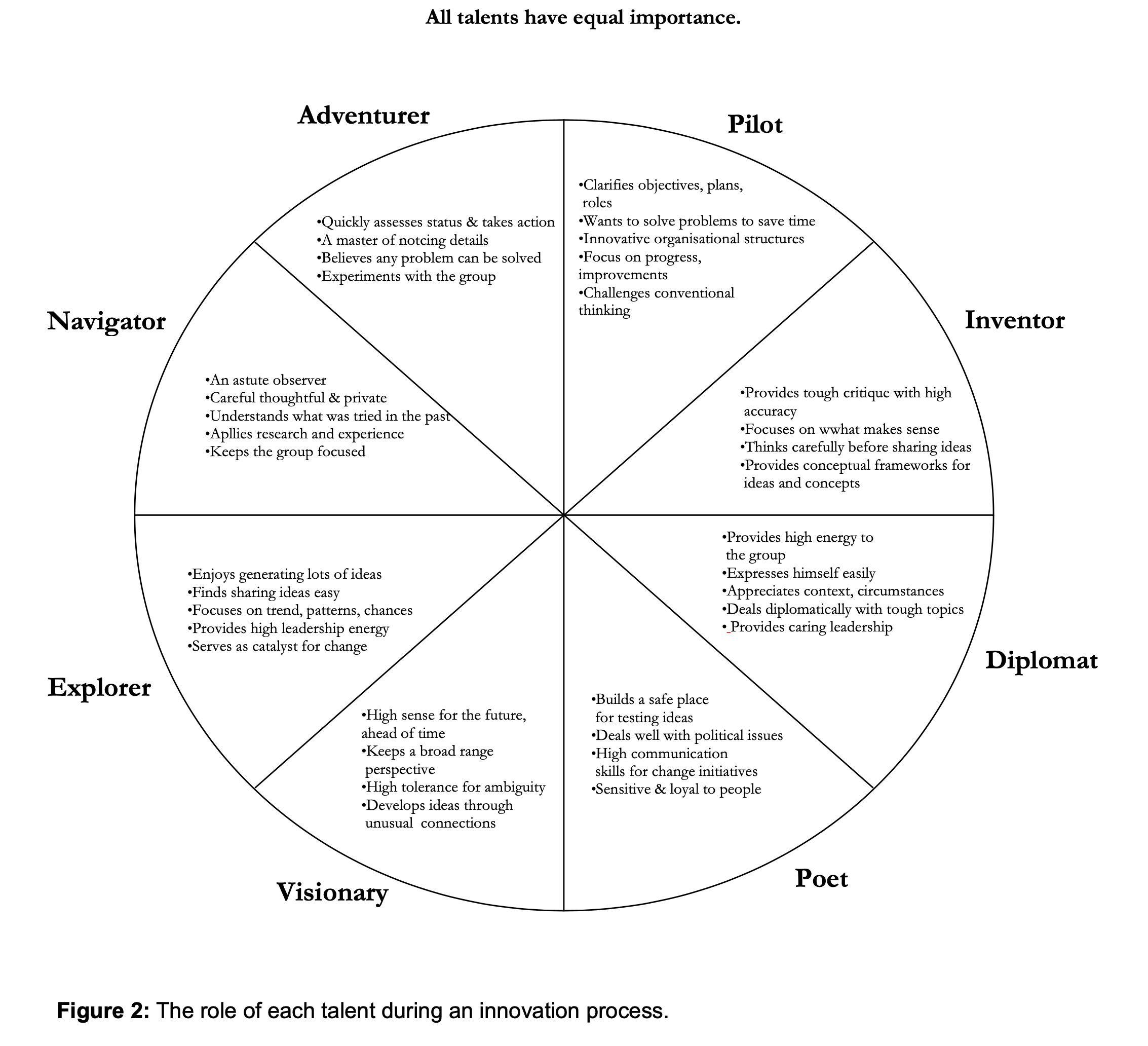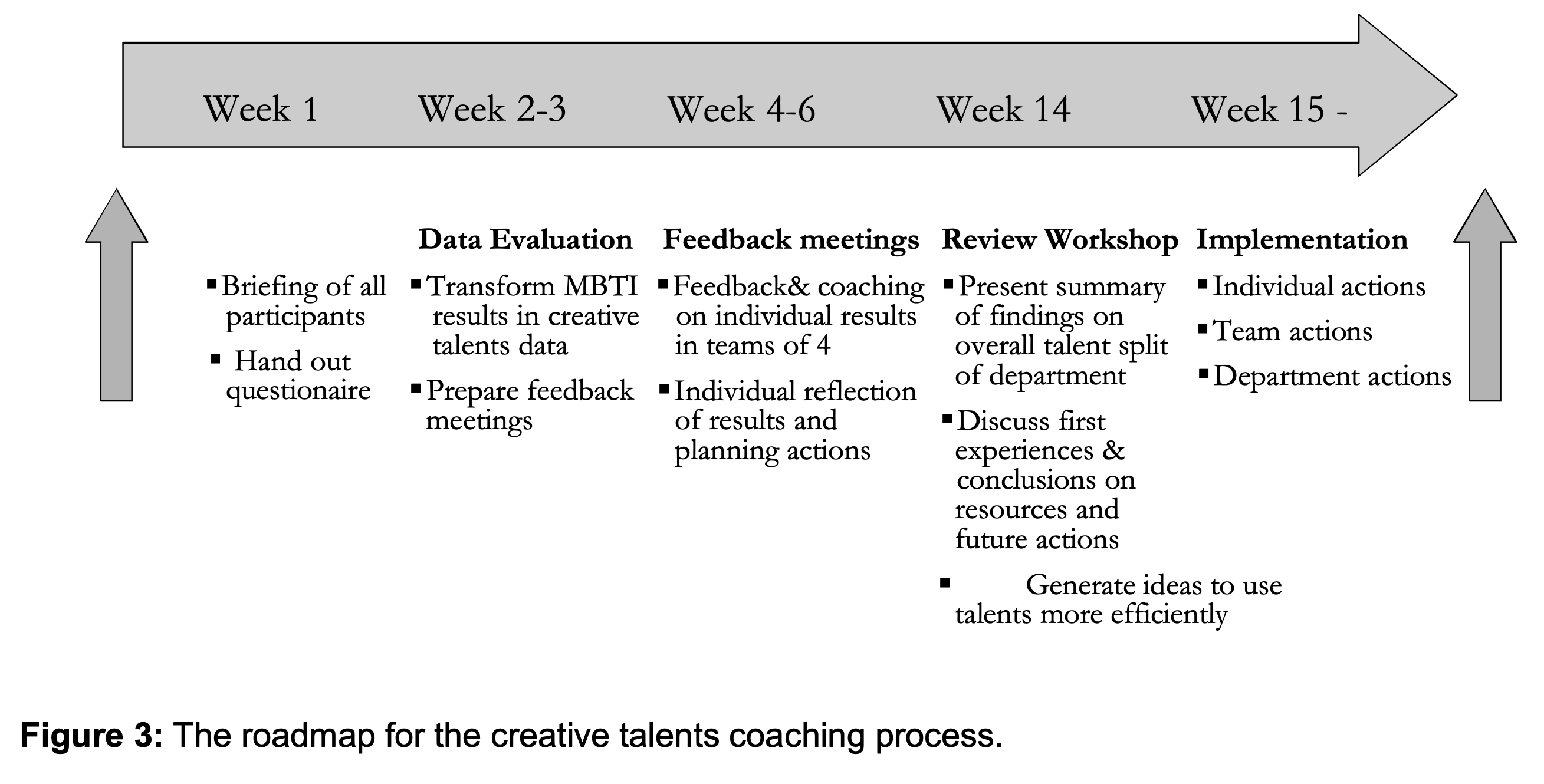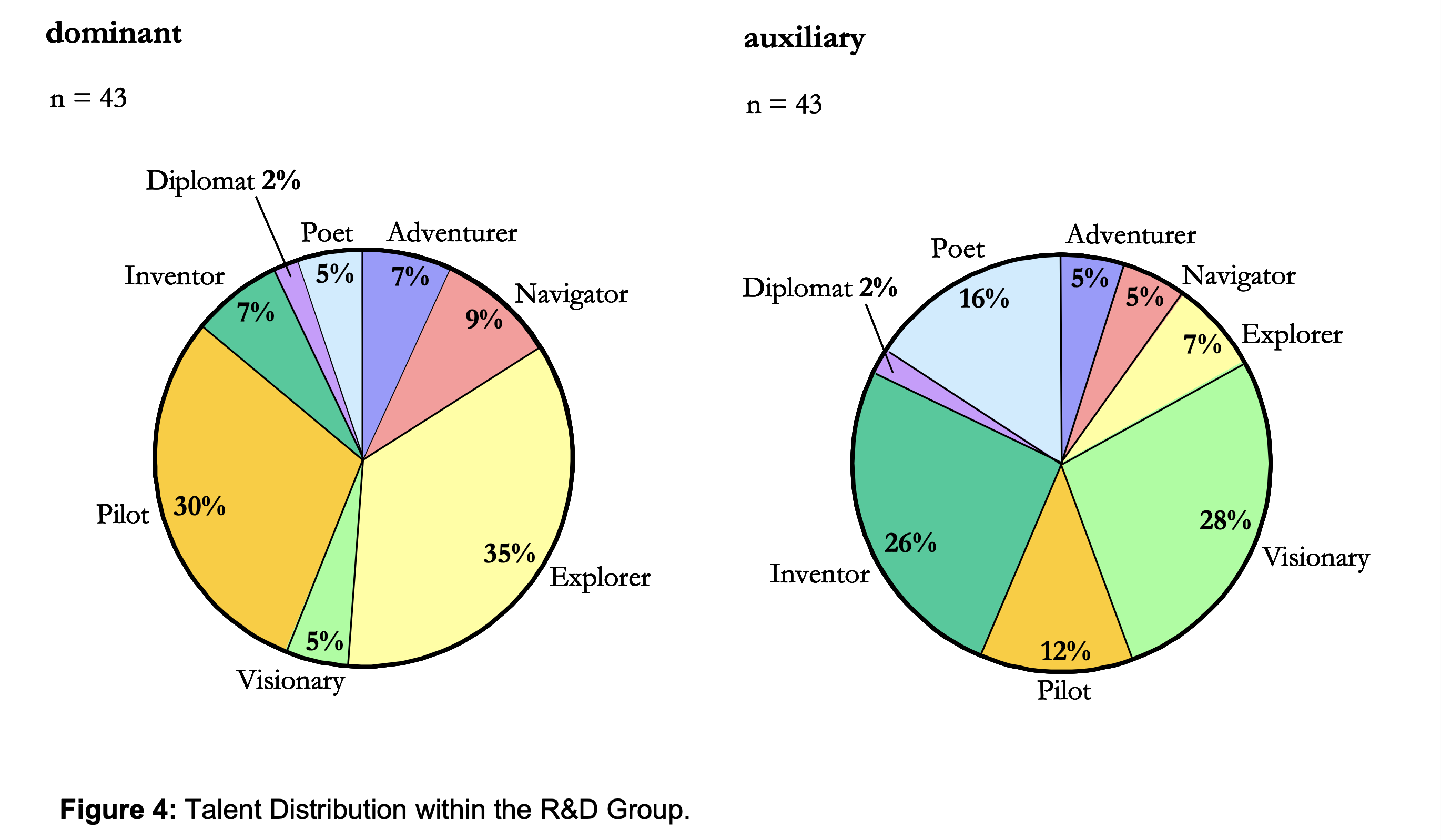The Human Side of Innovation
Introduction
„I am not very creative“, that’s what most people say. In addition, most people relate creativity to outstanding geniuses i. e. Einstein, Leonardo da Vinci, Michelangelo. However, creativity is not a privilege of a specific group. Everybody has creative talents. There are different ways of being creative and contributing to the innovation process. One can be creative by supporting a climate of mutual respect and to encourage a challenging atmosphere, by motivating others and supporting them or by solving conflicts in order to foster creativity. In the business context such as in a R&D department the role and the output of creativity can be very clearly defined (see figure 1). And questions answered like: Are you creative? And if yes, how creative do you rate yourself? Are you aware of your creative talents and are you aware of the creative talents of your colleagues?
For Henkel with Thomas Müller-Kirschbaum as Head of Research and Development and his chiefs of staff Juan-Carlos Wuhrmann and Alexander Ditze, it is vital to make use of the creative potential of his employees at its best. The Henkel R&D Management is very advanced in steering its innovation processes. One of the few things they hadn’t looked at yet was what they call “the human side of innovation”. Together with the Institute for Applied Creativity (IAK) in Cologne – Germany – they agreed to step into new territory to discover, release, and develop the creative talent of each employee in their department. In this article we show how Henkel and the IAK established such a new program.
The objectives of the creative-talents program for Henkel R&D
In order to have a successful implementation the following objectives were defined for the Henkel creative-talents program:
- Supporting the individual creative talents of the key R&D employees and helping them toanswer one of the key pre-requisites in the innovation process: am I using my preferred talents to the fullest extent in my job and is the environment around me providing the opportunity to do so?
- Leveraging and synchronising team talents, to answer the question: do we appreciate the different talents within the team and are we using them to best advantage? Looking at the team’s chart of preferences, what patterns do we see and what impact does the pattern have on our performance?
- Developing the organisation to address the question: are the organisational structure and innovation strategy in line with the talents of the team and how can we develop our innovation culture?

The scientific background of the Creative Talent Management
The method is based on the findings by the Swiss psychologist Carl.G. Jung. Jung was lead by experience and research about personal differences. He traced patterns how you recognize information, define problems and challenges, and then go about producing creative responses and solutions. Jung defined eight different patterns for receiving information and making decisions, which are the key elements for creative thinking [1]. Each of the patterns of differences is equally valuable and equally creative.
To make his model more accessible and to help define these preferences, Kathrine Briggs and Isabel Myers developed the Myers-Briggs Type Indicator (MBTI) – an individual questionnaire and feedback instrument. Other instruments can be used as well to address personal creativity styles but the MBTI has many advantages. It is a validated, tested, and easily accessible personality inventory [2]. Thus, the MBTI serves as a valid platform for the eight creative talents. Lynne Levesque from Harvard Business school has managed through in depth research to transform the results of the MBTI into the eight creative talents (see above mentioned source). In her book “Breakthrough Creativity” she describes in detail the model. Creative Talent Management looks individually at the 4 preferred different functions which Jung has described such as:
How we perceive and collect data: By intuition (1) or by our senses (2).
How we make decisions: Through our logic (3) or through our feelings (4).
The focus of our energy when being creative lies on extroversion (consulting first with other colleagues) or introversion.
The MBTI questionnaire is used to reveal the preferences of each participant. With these four preferences (intuition, senses, logic and feelings) combined with either extroversion or introversion, we arrive at eight different talents. These talents are described in detail with regard to their contribution to creativity & innovation.
Each participant receives a feedback as to which talents he/she uses preferably (dominant talent) and which talents serve as auxiliary helping talents. The feedback given to each participant focuses on the following creativity/topics:
- The uniqueness of each talent
- The team contribution of each talent
- Which specific questions does each talent ask in creative process
- Overall contributions and input of each talent
- Possible obstacles and barriers which each talent has
- Recommendations how to make specific use of this talent and how to deal with the individual obstacles (see figure: 2)
Jung believed that each of the eight creative talents is equally valuable and equally creative. In most of the teams not all talents are represented which is not necessarily the key issue. However it is vital for a team to identify which talents are present and to create awareness for the missing talents. People in the team could take the role of a missing talent.

The process at Henkel R&D
Over 80 managers have completed the program in 2003.The key issue was to support their innovation champions with creative know how and the opportunity to reflect on their leadership how to foster creativity in R&D. The whole program was run on a voluntary basis.
Apart from motivational aspects (everyone in the division has creative potential), it was vital for the management to get the message across, that apart from tools human aspects of innovation should not be neglected and be made aware.
Therefore, questionnaires were handed out, analyzed (see figure 3), and strategic options developed.

Results and Insights
As Thomas Müller-Kirschbaum expected, 65% of the dominant talents were Pilots or Explorers and 50% of the auxiliary talents were Visionaries and Inventors.
The mission of the R&D department was to deliver viable product solutions. Thus, the strengths of the dominant talents seemed to be aligned with this mission. Still, this mix was a specific Henkel mix (see figure 4).
However, there was a concern regarding the level of experimentation and willingness to make mistakes. The target of the project was to improve the cooperation within the group of R&D managers and to better apply creativity along the innovation process. Therefore, each manager voluntarily made public his/her dominant and auxiliary talent to the rest of the group. Everybody’s talents were known to all others, communication within the group could start on a different level. Given the preponderance of certain talents, the team wondered whether other talents felt heard and appreciated in the team. According to Alexander Ditze, the team also questioned how well they were building relationships, both within the team and with other groups, given the low proportion of Diplomats and Poet talents. However, many participants felt positive towards the outcome of the project. Here are some of the comments:
“We have started to listen to different talents in a more appreciative manner”
“I believe in diversity of the talents. A mono culture of talents will lead to more of the same output”
“This initiative will certainly not stop after a couple of months. It will accompany us the next 2- 3 years”
In order to solve the recognized problems the first, initiatives were started, such as:
- Starting a process of appreciating the different talents within the organization
- When establishing new teams, consider the creative talents and the skills
- Sharing the knowledge amongst the R&D employees more openly
- Nourishing the innovation culture with tailor made activities
- Making sure the environment for those with Visionary and Inventor talents was working, given their preferences for more private space and reflection.
- Involving other departments such as Marketing and other groups within R&D in the effort to identify and leverage talents, for more inter- departmental creativity and innovation.
The team agreed that the Eight Creative Talents were a relevant and important foundation for identifying and developing individual creative potential. The team gained important insights about individual differences for gathering information and making decisions and how these impact creative contribution.

References
[2] Lynne C. Levesques, Breakthrough Creativity, Achieving top performance using the eight creative talents, Davies-Black Publishing, Palo Alto, California, 2001